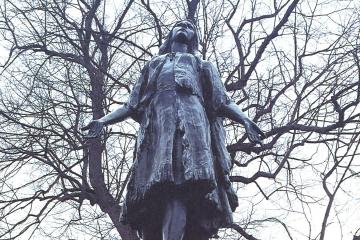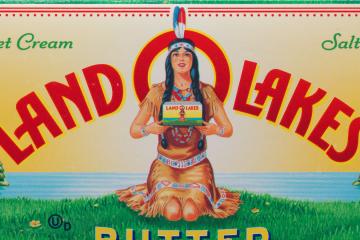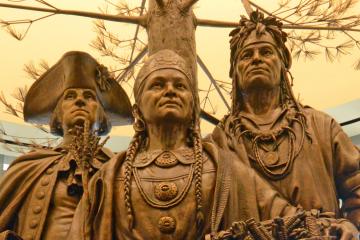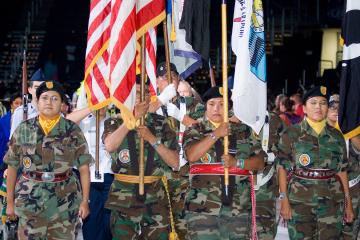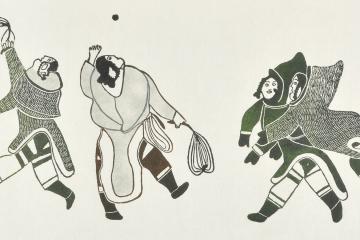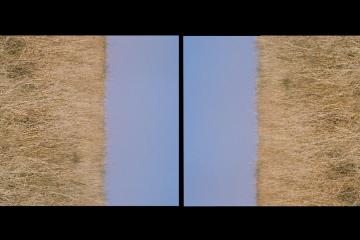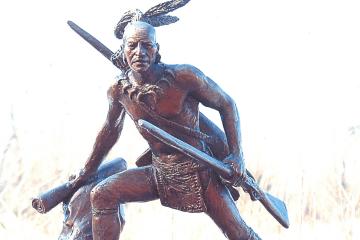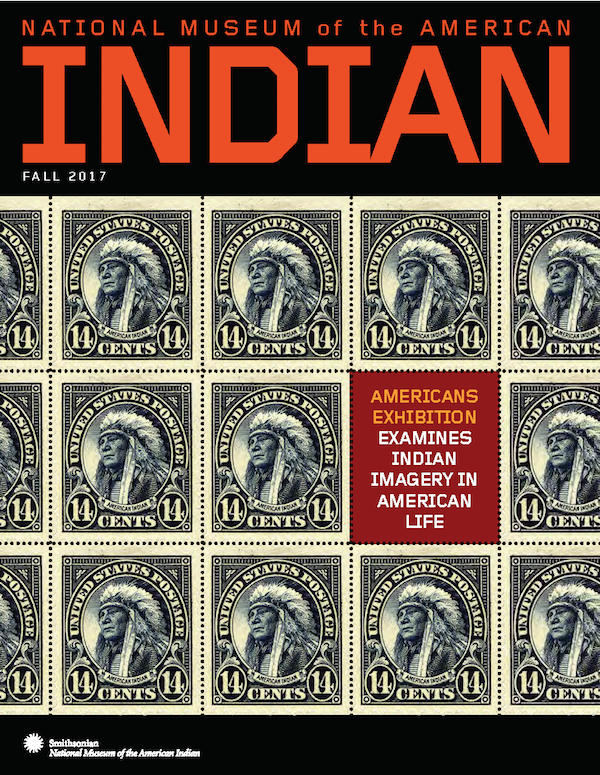
On the Cover
Already a familiar face in Washington, D.C., Sicangu (Brule) Lakota chief Mat ó Hé lo e a, or Hollow Horn Bear (c. 1850–1913) became the iconic, if unnamed, “American Indian” by 1923, when his likeness appeared on the new 14-cent U.S. postage stamp. He also appeared on the five-dollar bill, the first and only historic Native to be shown on U.S. paper currency. Hollow Horn Bear fought alongside Oglala Lakota Chief Red Cloud in Red Cloud’s War of 1866–68 and participated in the defeat of Gen. George A. Custer in the Battle of Little Big Horn in 1876. Yet he later served as a delegate to the federal government and marched in the inaugural parades of Theodore Roosevelt in 1905 and Woodrow Wilson in 1913. His transition from feared enemy to national symbol is one of the mysteries explored in the major new exhibit Americans, opening this fall at the National Museum of the American Indian on the National Mall.
U.S. 14-cent postage stamp issued May 1, 1923, in Washington, D.C., and Muskogee, Okla. Clair Aubrey Huston designed the stamp, based on a picture taken in 1905 by Bureau of American Ethnology photographer De Lancey W. Gill. Louis Schofield engraved the vignette. (Scott catalogue 565).

